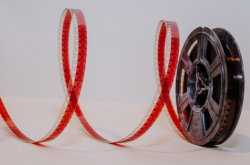Amongst today's most promising materials are nanoplatelets - 2D semiconductor nanocrystals that have been actively researched over the last decade; having learned how to produce these materials by methods of colloid synthesis, scientists got the opportunity to discover their new properties. The latest advancement in the development of nanoplatelets has to do with combining semiconductor and metal components in order to create a new type of materials called nano-heterostructures, which boast a significant increase in the nanocrystals' properties. For instance, one of their most important features is the possibility of a spatial separation of charge carriers between the core and shell materials, which provides for controlling the nanostructures' optical properties on a high level. What's more, heterostructures allow the use of optical, electrical, and magnetic phenomena that are inaccessible to single-component nanocrystals.
The new article by ITMO scientists reviews different architectures of heterostructures developed on the basis of 2D nanocrystals of cadmium chalcogenides, the basic mechanisms for combining semiconductor and metal components, their effect on the nanoplatelets' optical properties, as well as their existing applications and future development prospects. The article structures the existing knowledge on the subject and the terminology used by different research groups that have worked on creating nano-heterostructures in the last several years.
 Production of silicon nanoplatelets. Credit: gapp.az
Production of silicon nanoplatelets. Credit: gapp.az
"In our laboratory, we also work with nanoplatelets - both single-component and heterostructures made of nanoplatelets. For instance, we've conducted studies on the kinetics of luminescence decay rate in ultrathin nanoplatelets of cadmium selenide; in our work, we faced a problem: the existing knowledge on the subject was yet to be systemized. Different research that has been done by our colleagues rarely took account of others and the terms used in these works often differed. This is why we decided that a review that will systemize the experience in this field and help to explain the current trends to those who just started to work in it is necessary," comments Tatyana Kormilina, the article's main author and staff member of ITMO's Information Optical Technology Center.
Semiconductor nanocrystals, various heterostructures and multicomponent systems are considered promising for a wide range of applications - from biological visualization to color displays. According to the article's authors, there has already been significant progress in the introduction of cadmium chalcogenides nanoplatelets and creation of effective affordable new generation light-emitting devices. As with any nanocrystals, one of their promising applications is for new semiconductor lasers that can be used on a nanoscale.
 Tatyana Kormilina
Tatyana Kormilina
To put in effect the grand potential of nano-heterostructures, the specialists will have to solve the issues related to the complexity of their production and finding the right balance between their advantages and drawbacks, including the issue of the structures' stability. For instance, a thicker semiconductor shell provides for better luminescence intensity, yet weakens the quantum confinement effects that define the nanocrystals' unique properties. Thus, one has to choose the golden mean between these conflicting properties, stress the review's authors.
Other key tasks that aim to contribute to the development of this field are: expanding the range of materials used for creating heterostructures, finalizing the synthesis processes, and providing for environmental stress screening and operating conditions that will allow to preserve the unique properties of colloid nano-heterostructures.
Reference: Tatiana K. Kormilina, Sergei A. Cherevkov, Anatoly V. Fedorov and Alexander V. Baranov, Cadmium Chalcogenide Nano-Heteroplatelets: Creating Advanced Nanostructured Materials by Shell Growth, Substitution, and Attachment, Small, 2017





